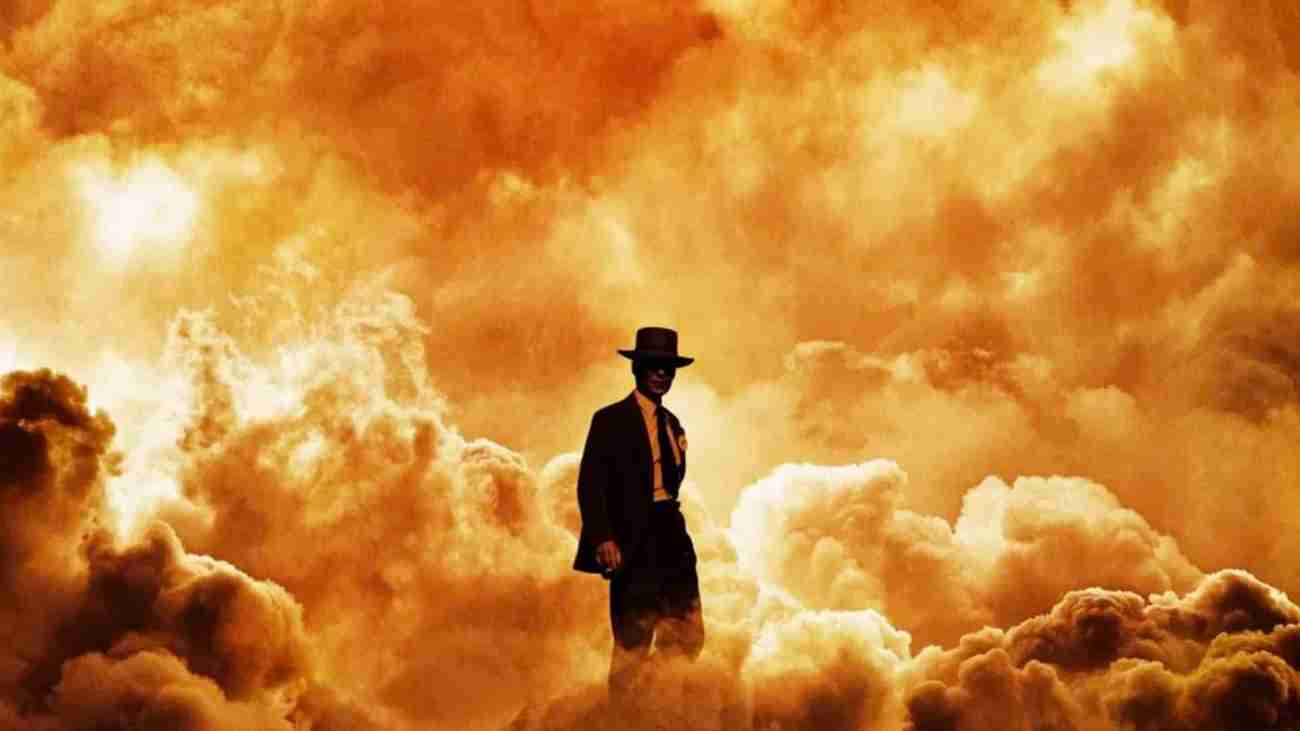Before I give my opinion on Nolan’s new film, I’d like to focus on the ad campaign that featured Oppenheimer and Greta Gerwig’s Barbie in the crossover and ad campaign. Even if in Italy this blow only partially occurred, given that both films were released simultaneously in the United States, we too were stunned by the images, memes, exchanges and discussions about the two “competing” films. If we are talking about the usual promotional ideas that used the opportunity to draw attention to two titles, then if we wanted to listen and follow the entire release, we had to be tired, even sick. Today, thanks to the Internet, we have another way to both promote films and learn about them. In a sense, it is very difficult to go to the cinema without being overwhelmed by this bombardment, which only scratches the surface of the information needed for a more punctual and informed viewing regarding the type of film and the topics covered. Having said that, I’ll move on to summing up Nolan’s new film; which garnered a ton of hosannas, as well as generous box office receipts that continue to rise, which is a sign that this overall campaign was ultimately rewarding, but also that both films were worth watching, regardless of the media hype, in of which (a considerable difference) compared to the past) we are now 98% complicit.
Oppenheimer is based on the biography of the great physicist by Kay Bird and Martin J. Scheeren, Robert Oppenheimer, Father of the Atomic Bomb. Triumph and tragedy of a scientist” 2006.
Nolan used 65mm and 70mm wide IMAX film, minimal use of digital technology, and shot in both color and black and white. Oppenheimer, according to the screenwriter, is a good film, with good moments, some excellent, some even sublime.
Despite the generally positive reviews from critics, there was no shortage of negative criticism. Which, fortunately, exist and always serve to balance the rest, simply to try to find the most “objective” measure, at least as a corrective to some party enthusiasms.
Personally, I have a conflicted relationship with British director: an interesting and sometimes notable experimenter of languages, an artist who, regardless of the results, is always looking for an author’s style that avoids banality, in some films he seems to get lost in games that show nothing but skill, but are not always necessary for the overall result .
Well, largely in Oppenheimer, Nolan seems to find an almost perfect balance between these temptations and service to the film. Yes, sure; there are some false notes. Personally, I wasn’t entirely convinced by Tom Conti’s portrait of Einstein, which I found quite funny (especially in the scene in which he appears, as if for prestige, behind a car that drives away after bringing the nuclear physicist back to his home. In some there’s a slightly Spielbergian and sweet spirit to this moment. The American flag that can be seen fluttering in the wind is wrong, and some events didn’t happen quite as they did in the film. But beyond that, and without being too fussed, “Oppenheimer” has the great virtue of being fluid and completely personal. a way of sequences of images that are arranged into scenes, encompassing and relating to each other.
Nolan, as is typical of his time-obsessed cinema, mixes up both the narrative and alternating color with black and white, the events that led to the emergence of the scientist who changed our world. We are dealing with the phase of the trial sought by Strauss (the exceptional Robert Downey Jr.), President of the Atomic Energy Commission, caused by the communist sympathies of the physicist, who, however, never joined the party, but entered into a romantic relationship with Jean Tullock (Florence Pugh), a communist activist who would awaken him both to a more concrete political awareness and to the discovery of relationships based on authenticity (Oppenheimer was sensitive to women’s charms, and his feelings were reciprocated).
Instead, the colorful narrative concerns Oppenheimer’s career as a brilliant student and later as a physicist who surpassed Einstein in research. I said: a good film, sometimes excellent. But I think Nolan still needs to take a few more steps forward so he can forget a little. As exciting as it is, 70% mature, a likely step towards an even better film, Nolan should completely disregard some of the games he’s always childishly attracted to, and perhaps accept that there are some things that are justifiable to obsess over To conduct storytelling at its best, you don’t have to sacrifice everything. As is the problem of the Los Alamos site, which caused very serious harm to the indigenous population and which is not taken into account in the film. Or the final turning point in the trial of the scientist, during which Kennedy’s name is thrown out (and here we are in Nolanian Spielbergism).
If a film is not to exhaust all its problems, but to exhaust itself as a film to its full potential, then there are certain historical circumstances that carry inevitable weight. I won’t compare, but Kubrick in Dr. Strangelove managed to fit all the dilemmas into an almost perfect figure. But perhaps directors like Kubrick had a history behind them and understood the seriousness and need not to neglect form and content, but to actually bring the content together in the most comprehensive form possible (in Strangelove this is the grotesque key). But nevertheless, Oppenheimer is a film that should be watched without hesitation, because it is cinema, and in some places on a significant level. He hopes that one day the director of “Memento” and “Inception” will finally become an adult.
OPPENHEIMER
(2023, USA/UK)
Director: Christopher Nolan
Cast: Cillan Murphy, Emily Blunt, Robert Downey Jr., Matt Damon, Florence Pugh
Giovanni Natoli

